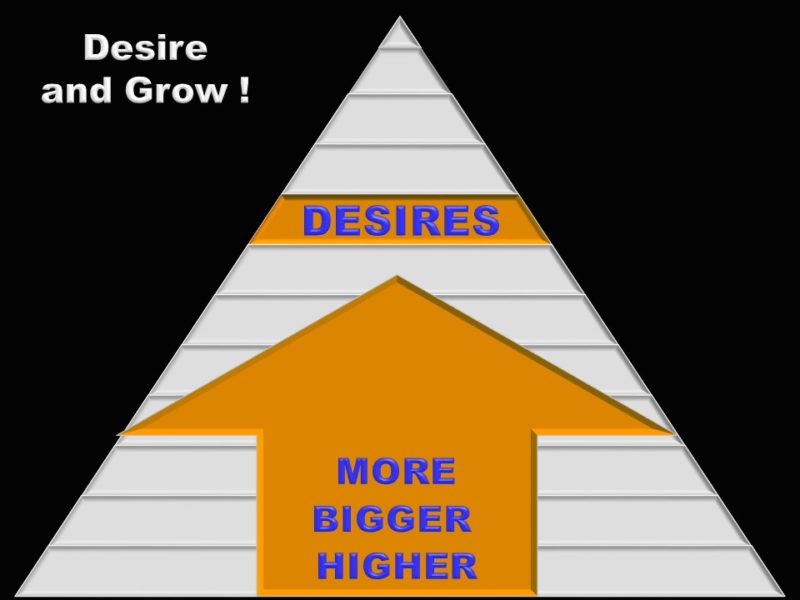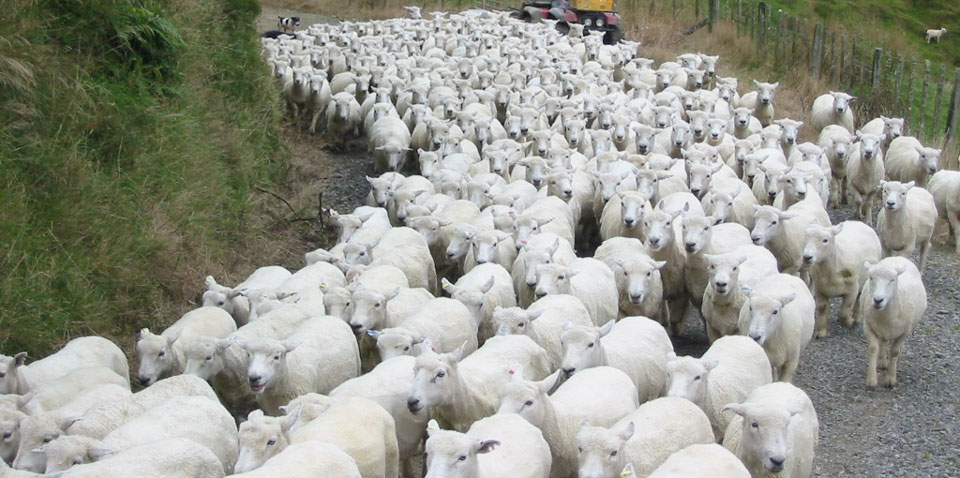[Reading Time: 4 minutes]
Hindu and Buddhist theology says that the pursuit of happiness and evading unhappiness is the most intrinsic and basic human tendency and dictates all our actions.
Hindu scriptures also say that human life is based on the four pillars; Dharma, Artha, Kama and Moksha. That, there is no liberation [Moksha] till your desires [Kama] have been satisfied by things bought from money [Artha] that has been earned by righteous actions [Dharma].
Our life is full of desires. Happiness is caused by fulfilment of desires. When you look at the nature of “desire”, you find that there is no end to desires. Once a desire is fulfilled, another takes its place immediately; you fulfil that, and there is yet another one. We are INSATIABLE WANTING MACHINES designed to desire. We are programmed and wired to keep on aspiring for more, more and more.
You also realise that our desires to “have more,” “have bigger” or “rise higher” always involves Growth. Resources are scarce and not distributed equally and unless you grow, you cannot have “more” or “bigger” or rise “higher”.
Our continuous aspirations, whether it is for “more money”, “a bigger house” or “a higher designation” ensure that we keep on growing. Growth enables us to meet our aspirations and we desire further growth. This cycle fuels infinite expansion of our consciousness and potential.
This is the story of human evolution. The process of fulfilling our desires has made us reach out, extend our intelligence and transcend our boundaries. We didn’t stay in the caves, we didn’t even stay on the planet, we went to the Moon, the Mars and there’s no stopping us.
This is what defines us, and differentiates us from animals. The animal lives autoplastically, it adjusts itself to the environment. Whereas man lives alloplastically. Man changes his environment to suit his requirements.
Whatever we eat, see around us, use every moment of the day, from simple clothing to the complex smartphones, computers, aircrafts; all was created out of someone’s desire to make life more comfortable. The same quest has helped to reduce infant mortality, increase life expectancy and revolutionize agriculture to provide food for a large and growing population.
To confuse matters, Hindu scriptures throw in a contradiction; explaining that desires create bondage, as our desires are for things which are impermanent and illusory. The scriptures also suggest that, not to feel desire is the highest level of spiritual achievement for man.
But these values were prized by the Rishis of the vedic culture in a distant past. It was a very simple, primitive life, and there were not many things to be desired. By no stretch of imagination, you can visualise a Rishi having a desire for a “Red Ferrari”. These men were sitting in some cave, or high on some mountains, meditating, away from civilization and its distracting influences. They still had to deal with their hunger and they felt tormented by lust. Hindu mythology is full of accounts of these Rishis succumbing to their carnal desires. They realized that their desires represented a major obstacle they had to overcome before they could rise to higher levels.
The fact that “the desire to merge with God was the highest form of evolution imagined by them” tells us that these men were still dealing with duality. They were trying to actualise their potential as they understood it then. The dilemma however is that, someone intensely desiring to reach the state of “no desire,” is also dealing with desire.
Can we apply the same principles in today’s context, for people living in a modern society where there are many things needed to make life more comfortable and meaningful ? If you are reading this on your smartphone or notebook, I know you are not sitting in some cave in Himalayas and you need to connect with your desires differently.
The principle of “Aham Brahmasmi’ maintains that there is no duality, that the godhead is within us. Dharma or righteous living requires us to become “all that we have the potential of becoming.” And to achieve that, you go through the process of first fulfilling your desires and then after having satisfied the desires, rise above desires.
Let us analyse and understand when our needs and desires become obsessive and create bondage, and how we can rise above the desires and be liberated.
The needs at the lowest levels are very basic, for things that are needed for physical survival; like food, water, sleep, and sex. Maslow’s hierarchy defined them as “deficiency needs”. If these needs are not met one cannot be comfortable. At the next higher level are the needs for security, safety etc. which are reflected in things that can also be possessed and/or measured, like a bank balance, a house, etc.
These needs relate to objects that are physically had like food and sex, or can be physically possessed like a car or a house, and therefore you connect with them in a “having mode.”Whenever, we connect with our desires in a “having mode”, we are operating at the lower levels.
The desires at the higher levels cannot be physically possessed or measured. The needs at the higher levels are “Growth and development” needs. The higher values like self -respect, self-esteem and self-actualisation are to be reached in the domain of becoming and being. When we connect with our desires in a “being mode”, we are operating at the higher levels of intelligence.
And one can be operating at these levels of growth and development only after there is satiation of the lower needs. Once your lower needs are satisfied, there is possibility of balance and harmony.
Surely, you have an animal body to maintain. You can have your physical needs, fulfil them and enjoy them too on a daily basis. There is no contradiction there. But they should neither define you, nor control you.
And, once there is satiation of desires, there is freedom both from desires and from things of desire. You can enjoy the things of the world, without being attached to them. There is no bondage. And you are liberated.
Keep desiring and keep growing !!




Leave A Comment